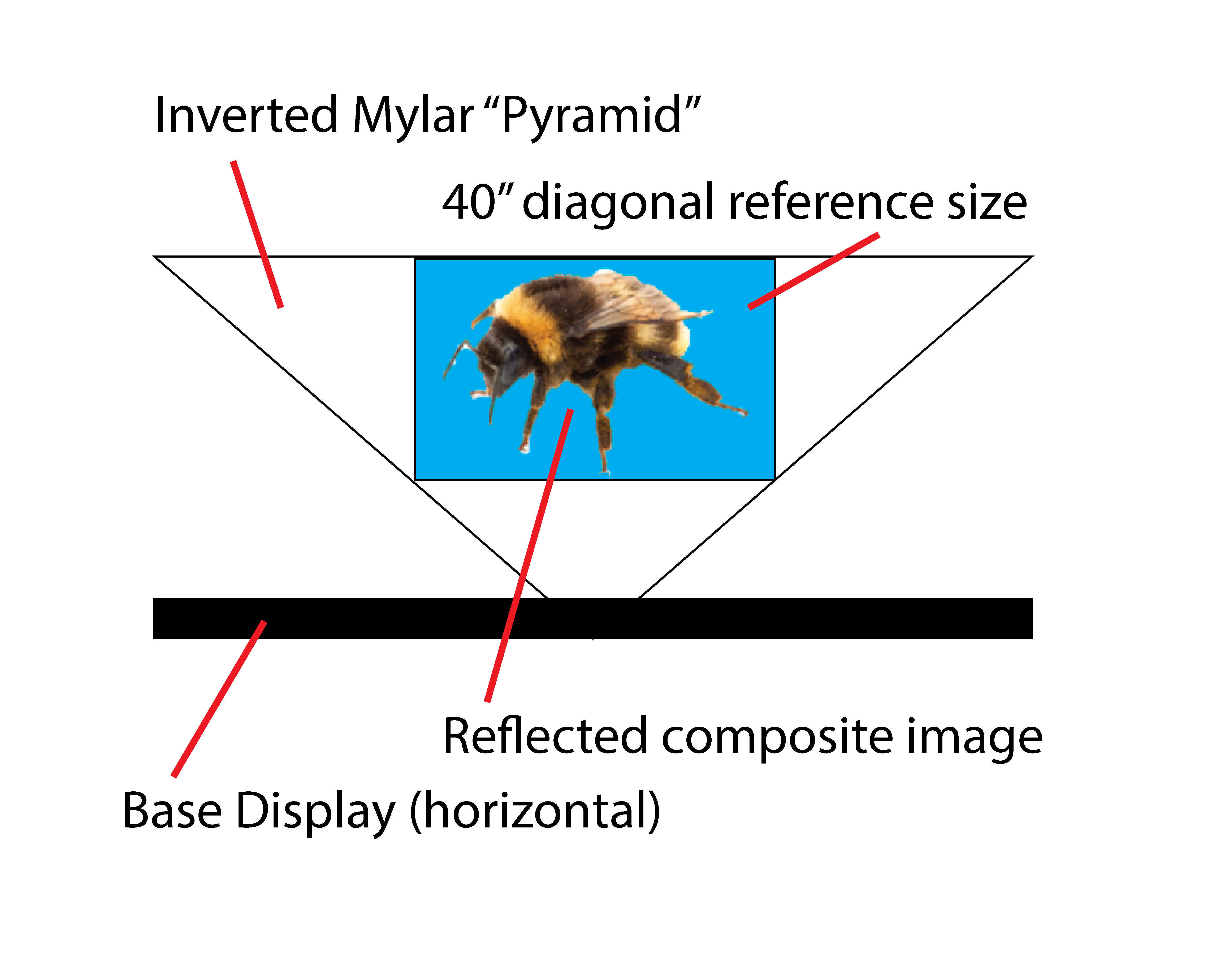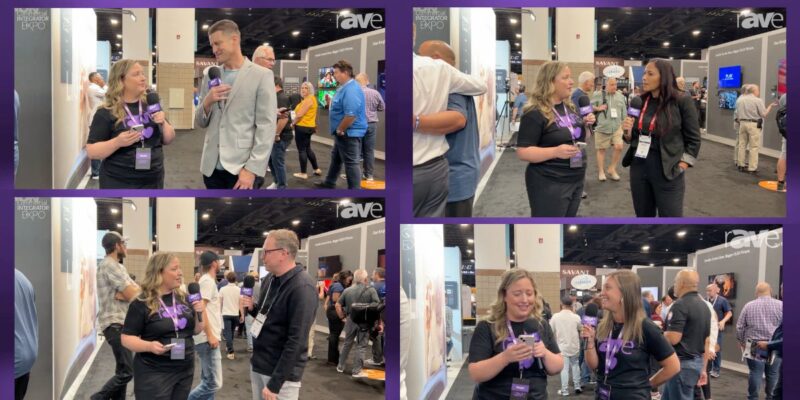4K, Holography and Why Terminology Matters
I admit it.
I’ve been trolled.
Typically when someone trolls you for a response on social media it means it’s time to take a deep breath and just move on. Convincing someone you don’t know to move away from a point of view they already hold rarely if never happens. It’s a futile effort. But in this case, I’m not only responding, I’m writing a whole blog about it. Go figure.
The other day I saw a post on Twitter touting a new “holographic” display the BBC was developing to change the future of television! Of course, I was intrigued and I clicked. I took the bait.

The video showed an inverted mylar mirrored pyramid sitting atop an LCD screen with four images displayed on it, creating a volumetric display with an image composed of four separate reflections. Don’t get me wrong, I’ve always liked volumetric displays. They have been around a long time and I think they have some really cool applications for retail or modeling and visualization. They are an extension of the old Pepper’s ghost theater trick, where an angled piece of glass in front of the stage reflects the image of an actor illuminated in the orchestra pit below, magically creating a “ghost” on the stage itself.
However, the future of TV? Probably not. Volumetrics are good at depicting a single subject in a quadriscopic reflected illusion. They are also typically relatively small.
If you wanted to insert those images into a setting you would need another screen at the rear of the volumetric playing the background video while the “holographic” subjects moved in front of it.
So lets take that to it’s logical solution for a TV. Even if you wanted to replicate what is now a small TV in a home, let’s say 40″ we have major problems. Take a look at the diagram below:

As you can see, to create an image equivalent to that on a 40″ TV, you’d need a pyramid that can encompass that screen. Then you’d need a base display about 2.3 times wider than that in the horizontal position below the pyramid to play the content for reflections. If you want background images behind the subject, you’d need a secondary 40″ diagonal display at the back of the unit as well. Then you’d need a cable box or PC outputting two streams, one for the subject in the pyramid, and a second for the 2D background display.
The result is a wholly new high bandwidth source box with dual outputs feeding an 82″x82″ display in the horizontal and a 40″ display in the vertical that takes up about 46 square feet in your living room…
I can say with certainty that this is NOT the future of TV.
Would it be amazing in an innovation center, a corporate lobby, a museum or even a theme park? Absolutely!
Now, despite the feasibility issues listed above, I have a much larger problem with this whole thing. It’s the use of the term “hologram,” as this is not holography in the first place, even is it is “holographish.” For anyone who follows my writing you may remember me taking exception to the use of the term 4K to describe UHD displays, or if you go back even farther, to me ranting about the misuse of the term automation as well. You may even have thought: “Wow! Mark is really crazy about terminology. Isn’t it close enough?”
The answer is no. Terms mean something, and using them improperly can actually devalue the services that we provide. We can’t get lazy and call technologies by names that don’t apply to them just to try to capitalize on them.
A great example of how the AV industry has devalued products and services through the lax use of terminology can be found in an award-winning talk given by Simon Dudley when he was at Lifesize. He correctly asserts that we did ourselves a disservice as an industry by calling everything from a fully equipped $500,000 telepresence room to a Skype call on a Chromebook “videoconferencing.” They are all most certainly that at the core, but the differences in performance are so great, that lumping them all together into one term brings them down to a lowest common denominator and causes consumers to use the lowest price as an anchor for the price they expect to pay. He makes the analogy that it would be like the car industry calling everything from a skateboard, to a go cart, to a car a “four-wheeled personal transportation device.”
The point is that terms matter. They differentiate technologies from one another and maintain the value and integrity of superior products and services. If we call everything from a Pepper’s ghost to a volumetric a “hologram,” then when true laser holography in open air becomes a reality, no one will listen and it will be harder to sell it.
As professionals, we should embrace the terminology that correctly identifies the technology at hand, and not piggyback off of existing buzzwords leveraging them to create more consumer interest. It may be good for short term sales, but it is bad for long term viability, for profitability of technology over its life cycle and for our reputations as technology professionals.





